Welcome to “12 Creative Living Room Makeover Ideas,” where the magic of interior design meets practical transformation. Whether you’re a beginner dipping your toes into the world of décor or an experienced home stylist seeking a fresh perspective, this guide is your passport to reinventing your living space with flair and functionality.
In today’s fast-paced world, a well-designed living room is not just a luxury—it’s a necessity. This collection of ideas offers value by blending aesthetic appeal with practical solutions, ensuring your room becomes both a beautiful and a comfortable haven. Through these pages, you’ll discover the joy of seeing your vision come to life, sparking both inspiration and a newfound sense of accomplishment.
Prepare to feel empowered as we dive into techniques that promise to elevate your living space with ease. With these creative ideas at your fingertips, you’ll gain the confidence to transform your home into a masterpiece, reflecting your unique style and personality.
Incorporate Bold Accent Walls
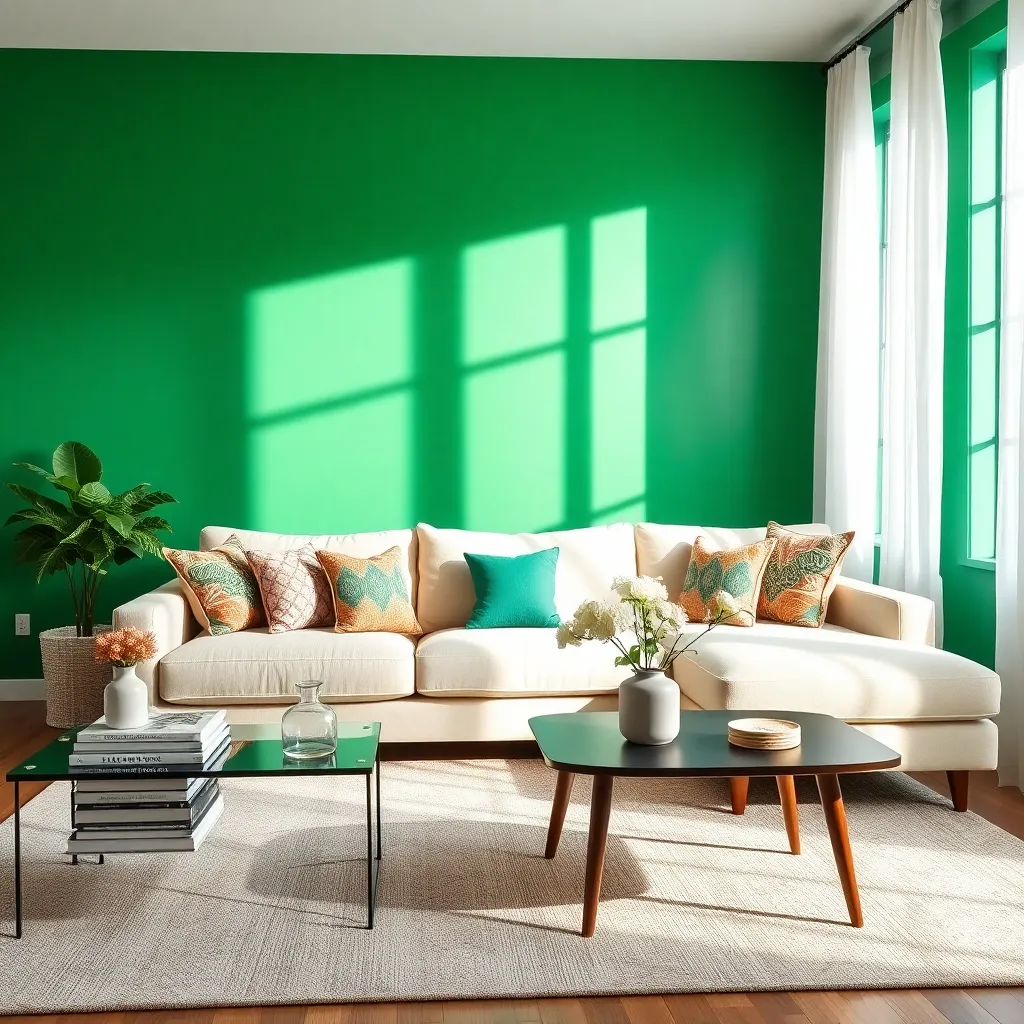
Transform your living room by incorporating a bold accent wall that commands attention and sets the mood. Consider using a deep blue or rich emerald green to create a striking backdrop that complements neutral furniture.
Choosing the right wall is crucial; opt for one without windows or doors to maintain a cohesive look. This technique allows the color to shine and provides a perfect canvas for artwork or mirrors.
For beginners, start with a single bold color and pair it with complementary textiles, such as throw pillows or rugs, to tie the room together. Advanced decorators can experiment with textured finishes like Venetian plaster or geometric patterns using wallpaper, adding depth and interest.
When selecting furniture, ensure it contrasts with your accent wall to prevent visual overload. A cream or light gray sofa can balance a dark wall, while metallic accents in furniture or decor add a touch of sophistication.
Revitalize with Statement Lighting
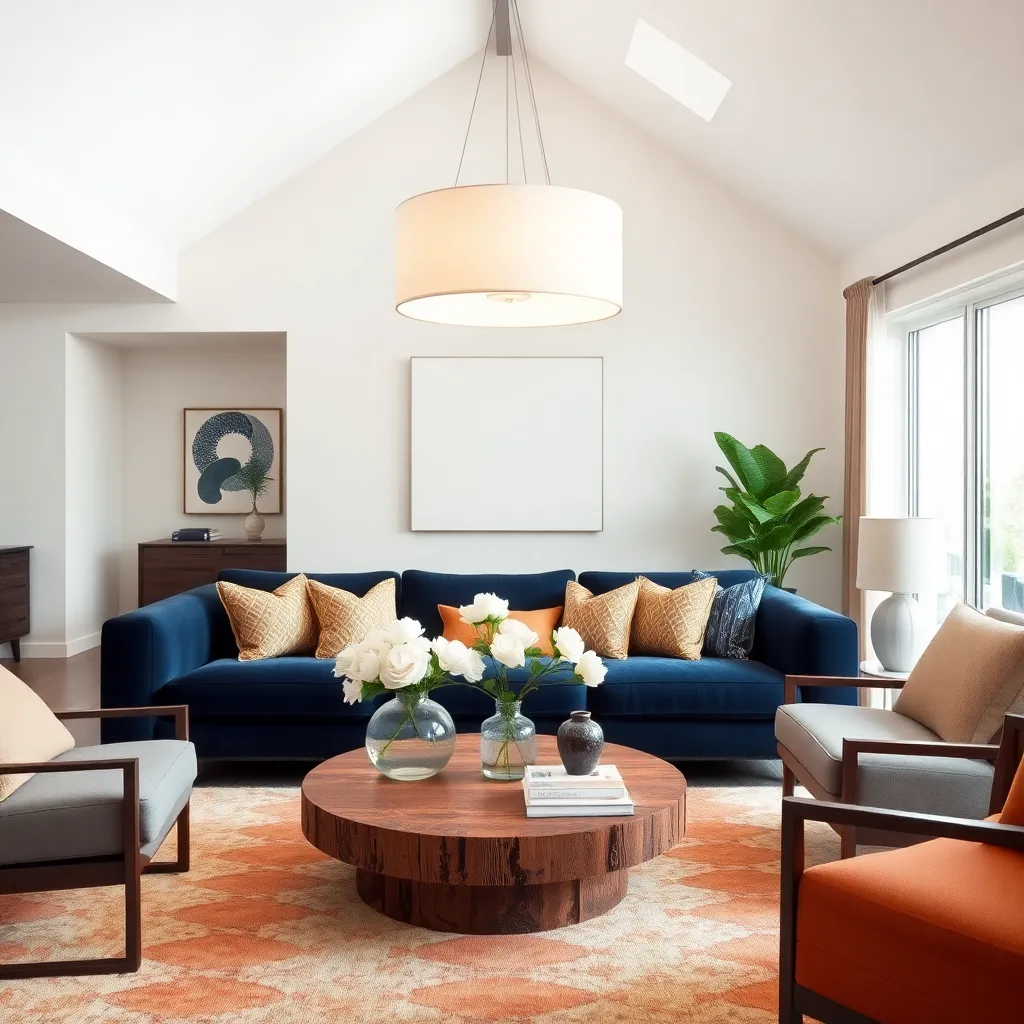
Statement lighting is a transformative tool that can dramatically elevate the ambiance of your living room. Begin by choosing a central fixture like a bold chandelier or an oversized pendant light that aligns with the room’s scale and style.
Consider the color and material of the fixture to complement the existing decor. For instance, a brass or gold finish can add warmth and sophistication, while a matte black or chrome can introduce a sleek, modern edge.
Placement is essential for maximizing the impact of statement lighting. Position your fixture to highlight key areas, such as above a coffee table or in the center of the seating arrangement, ensuring it is both functional and visually appealing.
For those looking to add an advanced touch, incorporate layered lighting with additional elements like floor lamps or wall sconces that echo the design of the main fixture. This approach not only provides varied lighting levels but also adds depth and dimension to the space.
Rearrange Furniture for Flow
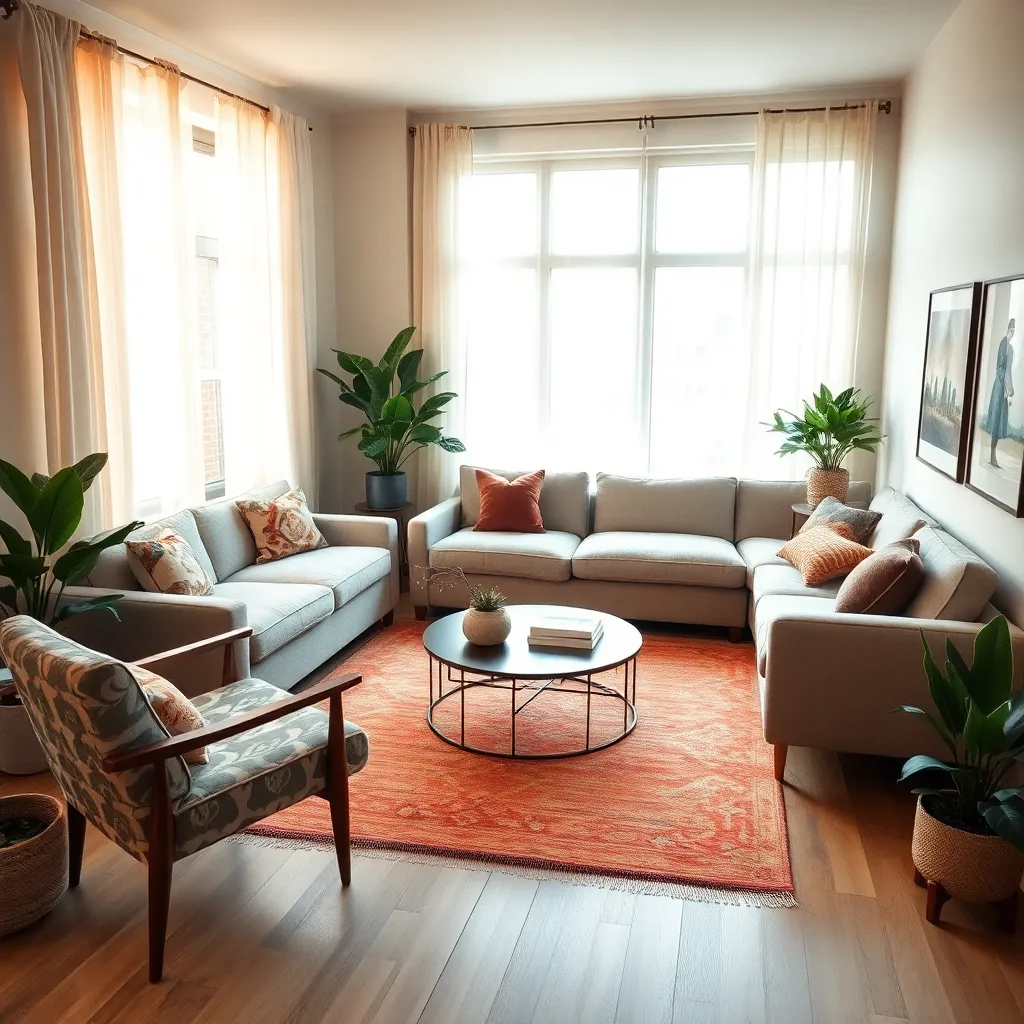
Creating a smooth flow in your living room starts with strategic furniture placement. Begin by identifying the room’s focal point, such as a fireplace or a large window, and arrange your seating to highlight it. This approach not only enhances the room’s visual appeal but also fosters a more inviting atmosphere.
Consider the traffic patterns of your living space to ensure ease of movement. Place larger furniture pieces, like sofas and armchairs, in a way that allows for clear pathways, ideally leaving at least 18 inches of space for movement. This facilitates a natural flow while preventing the room from feeling cluttered.
Experiment with angles and symmetry when arranging furniture to create a dynamic layout. For a unified look, align furniture pieces to create a balanced composition, or introduce asymmetry with a statement chair or art piece. This technique adds interest and can make the room feel more spacious.
For added sophistication, incorporate area rugs to define seating areas and enhance the room’s flow. Choose rugs that complement your color scheme and are proportionate to your furniture arrangement. Anchoring furniture with rugs helps delineate spaces and adds a layer of texture to the room.
Introduce Layered Textures
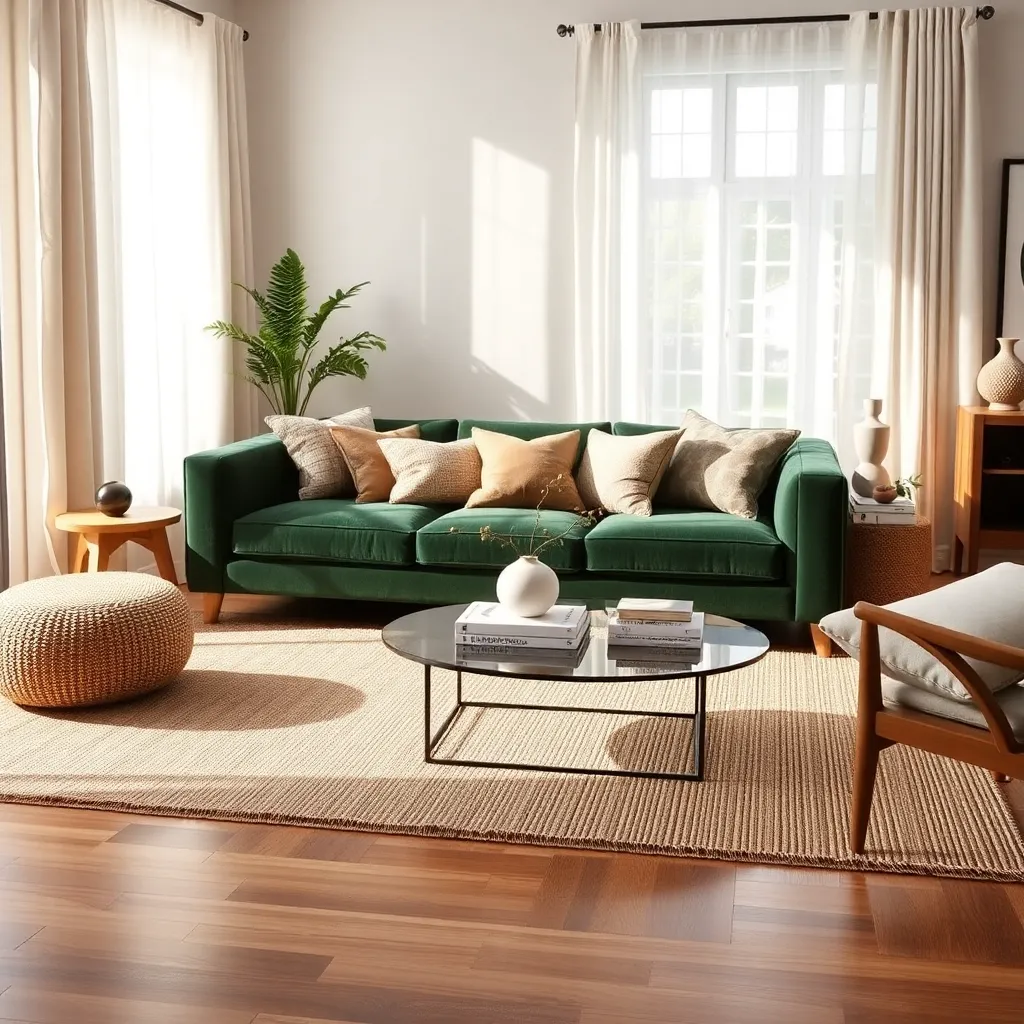
Adding layers of texture to your living room can create a space that feels both inviting and dynamic. Start by incorporating a variety of materials such as wool, velvet, and linen to add depth and interest.
Consider placing a plush velvet throw over a leather sofa to create a tactile contrast. Layering different textiles not only enhances visual appeal but also adds warmth and comfort.
For a cohesive look, mix textures in similar color palettes. Pair a chunky knit blanket with a smooth cotton cushion in complementary shades to maintain harmony.
Advanced decorators might experiment with juxtaposing rough and smooth surfaces like a jute rug under a sleek, glass coffee table. This technique can highlight different areas of your living room, adding both structure and intrigue.
Mix Patterns for Visual Interest
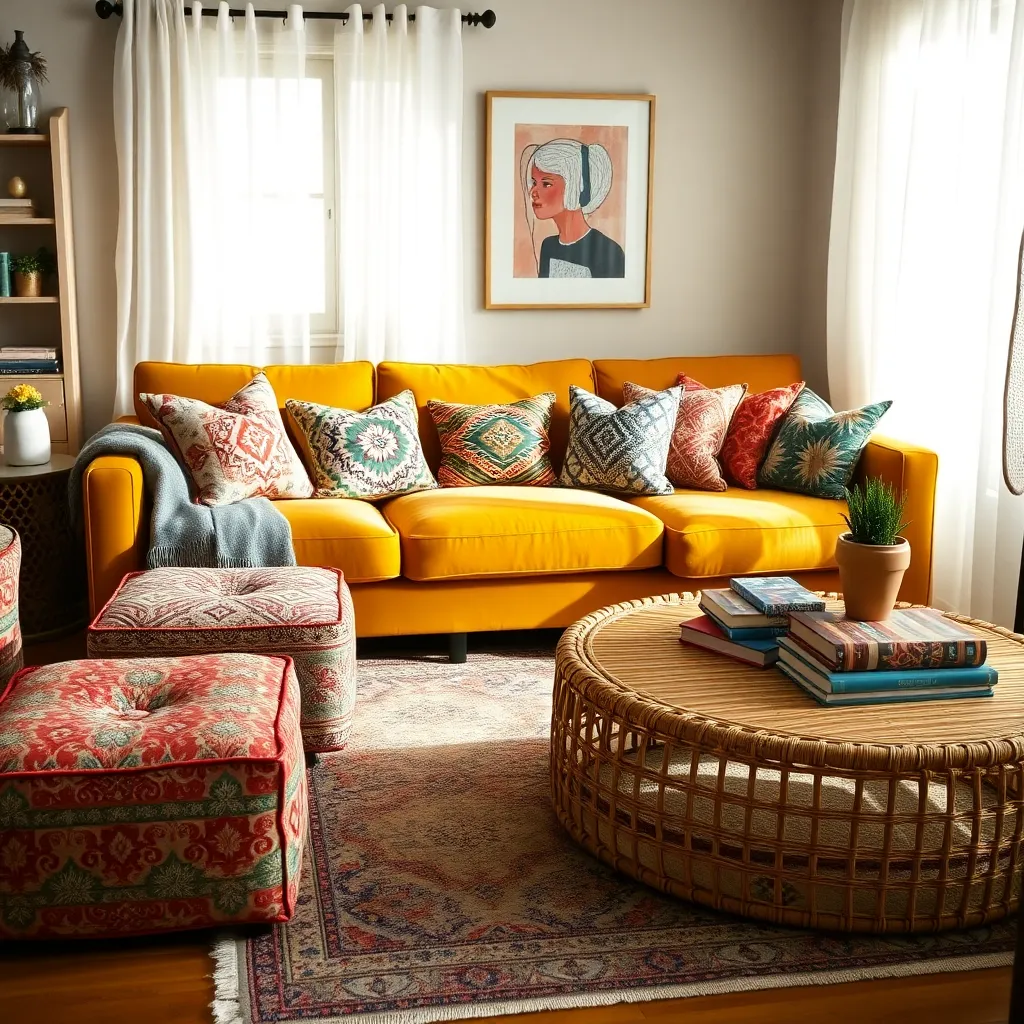
Mixing patterns is an excellent way to add visual interest and depth to your living room. Start by choosing a base pattern that sets the tone, such as a bold geometric rug or a floral wallpaper, and build from there.
Pair patterns of varying scales to create a harmonious look. For instance, if your sofa features a large plaid pattern, complement it with throw pillows in smaller prints like polka dots or herringbone.
Color coordination is crucial when mixing patterns to maintain a cohesive style. Select a color palette with one or two dominant hues, and ensure all patterns share at least one of these colors to tie them together.
Experiment with different textures alongside patterns for added dimension. A velvet cushion with a subtle pattern can beautifully contrast with a sleek leather chair, enhancing the room’s tactile appeal and visual richness.
Add Greenery with Indoor Plants
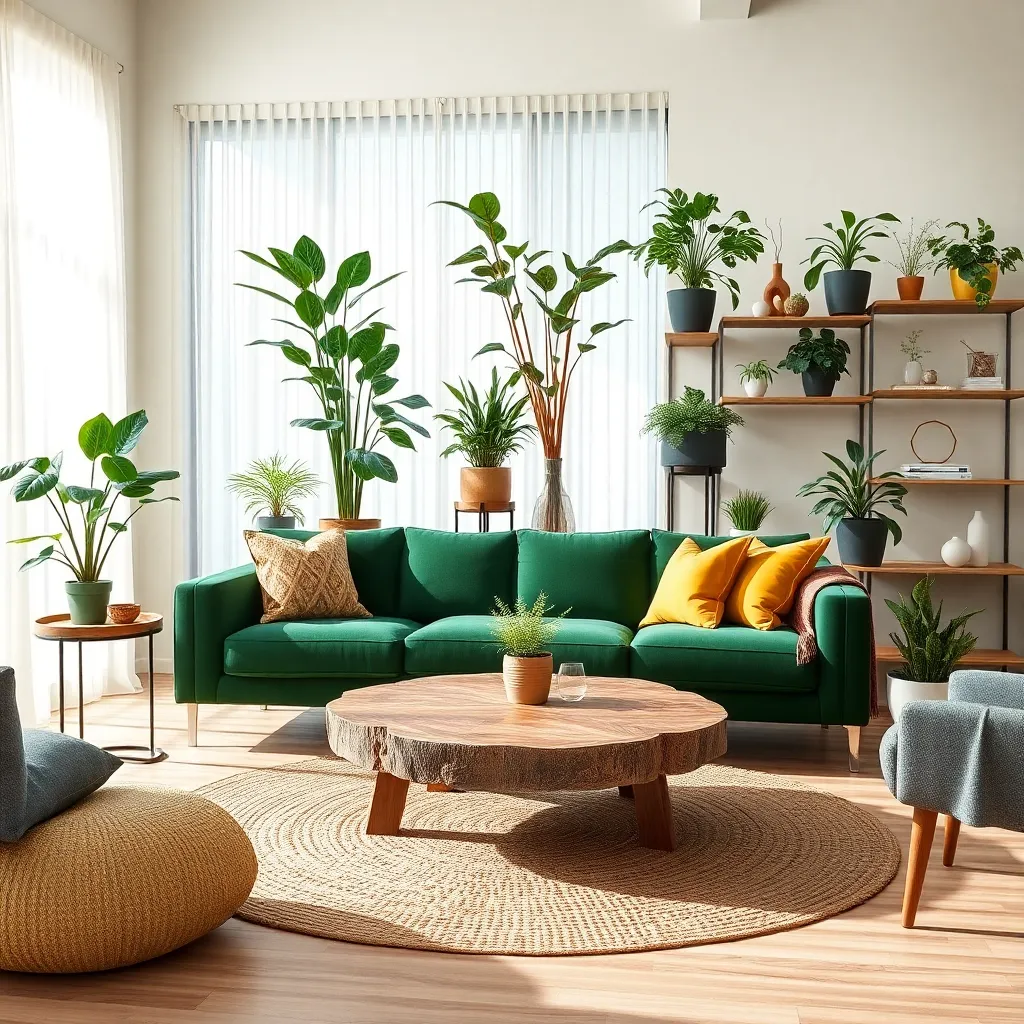
Introducing indoor plants into your living room can instantly add life and vibrancy, creating a more inviting atmosphere. Choose plants that thrive indoors, such as snake plants or pothos, which are easy to care for and suitable for beginners.
To get started, consider placing a large fiddle leaf fig in an empty corner to create a striking focal point. This not only adds height but also complements both modern and traditional decor with its broad, glossy leaves.
For a layered effect, mix different types of plants together on a shelf or console table. Use varying pot sizes and textures to enhance visual interest while ensuring the pots match your room’s color scheme for a cohesive look.
Advanced decorators might experiment with hanging planters to add dimension to the space. Opt for macramé hangers or sleek metal options, depending on your style preference, and make sure they are positioned to receive adequate light.
Utilize Open Shelving Display
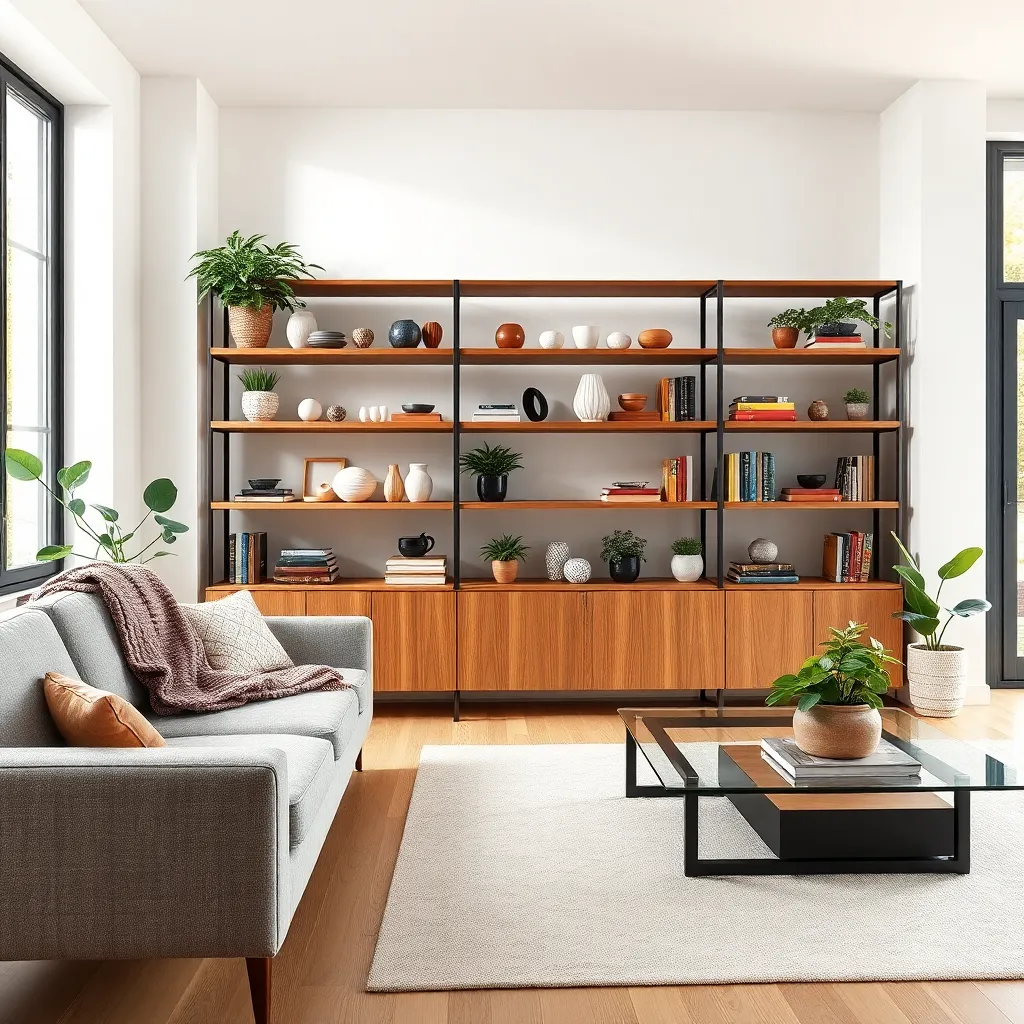
Open shelving is a versatile way to add both function and style to your living room. Begin by selecting shelves that match your existing decor, whether it’s sleek metal for a modern look or rustic wood for a cozy vibe.
Consider the placement of your shelving to optimize its impact in the room. Position open shelves where they can serve as a focal point, such as above a media console or along a blank wall.
When styling your shelves, mix and match items like books, plants, and decorative objects to create visual interest. Use a variety of textures and colors to draw the eye and introduce depth to the arrangement.
To enhance the overall aesthetic, group items in odd numbers and vary their heights. Advanced decorators can experiment with backlighting the shelves to add a sophisticated touch that highlights their displays during evening gatherings.
Refresh with New Cushion Covers
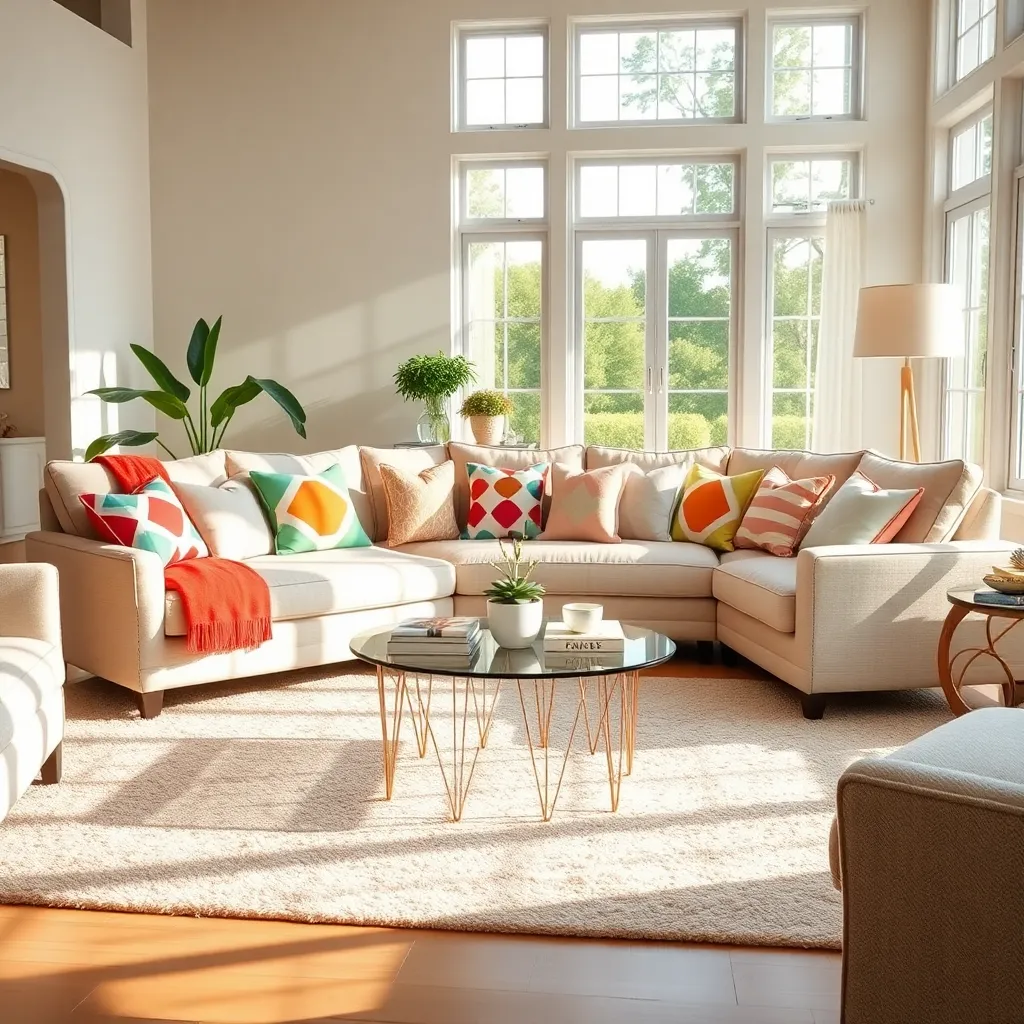
Changing cushion covers is an easy yet impactful way to refresh your living room without a major overhaul. Opt for **seasonal fabrics**, like lightweight linen in summer and plush velvet for winter, to add a tactile element that enhances comfort and style.
When selecting new cushion covers, consider a **color palette** that complements your existing decor. For a more cohesive look, choose two or three colors that echo other elements in the room, such as the rug or wall art.
Experiment with different **patterns and textures** to add visual interest and depth to your seating area. Mixing geometric prints with solid colors or incorporating a bold stripe can create a dynamic and inviting space.
Advanced decorators can play with **asymmetrical placement** by arranging cushions in varying sizes for a more curated look. Incorporate a mix of square and rectangular cushions, and layer them thoughtfully to achieve a balanced yet intriguing composition.
Create a Gallery Wall
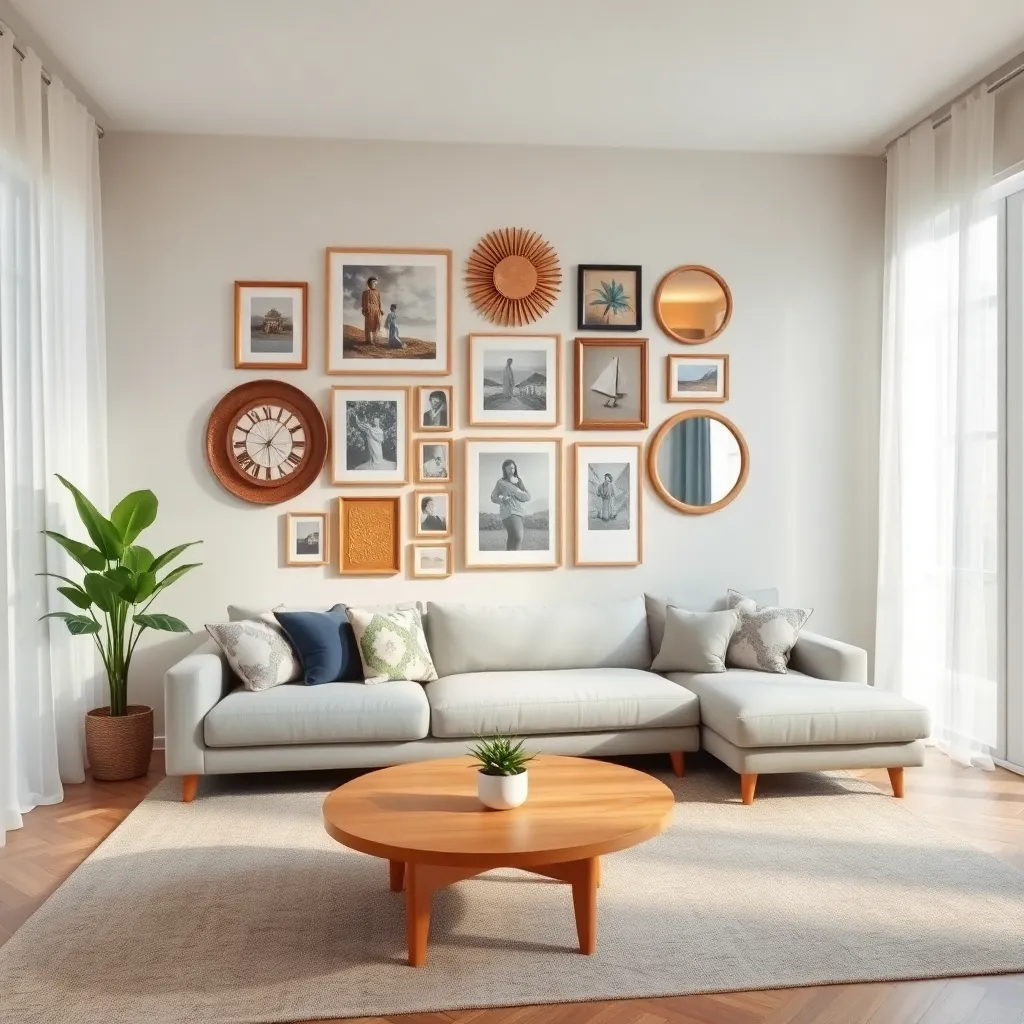
Transform your living room into an artful sanctuary by creating a gallery wall. Start with a theme or color palette that resonates with your overall decor to ensure a cohesive look.
Begin by choosing a mix of artwork and frames to add texture and dimension. Opt for a variety of sizes and shapes, including square, rectangular, and even circular frames to create visual interest.
Before hammering nails, lay the artwork on the floor to experiment with different arrangements. This practice allows you to find the most visually appealing setup without committing to wall damage.
For beginners, start with a simple grid pattern for a neat and organized look. Advanced decorators might explore more eclectic arrangements, such as a salon-style display, to showcase their creativity.
When it comes to hanging, consider using adhesive wall hooks for easy adjustments and minimal wall damage. This technique also allows you to change the display seasonally or whenever inspiration strikes.
To enhance the visual impact, integrate other decorative elements like small mirrors, clocks, or sculptural pieces. These additions can add depth and reflect natural light, further enlivening the space.
Swap Out Area Rugs
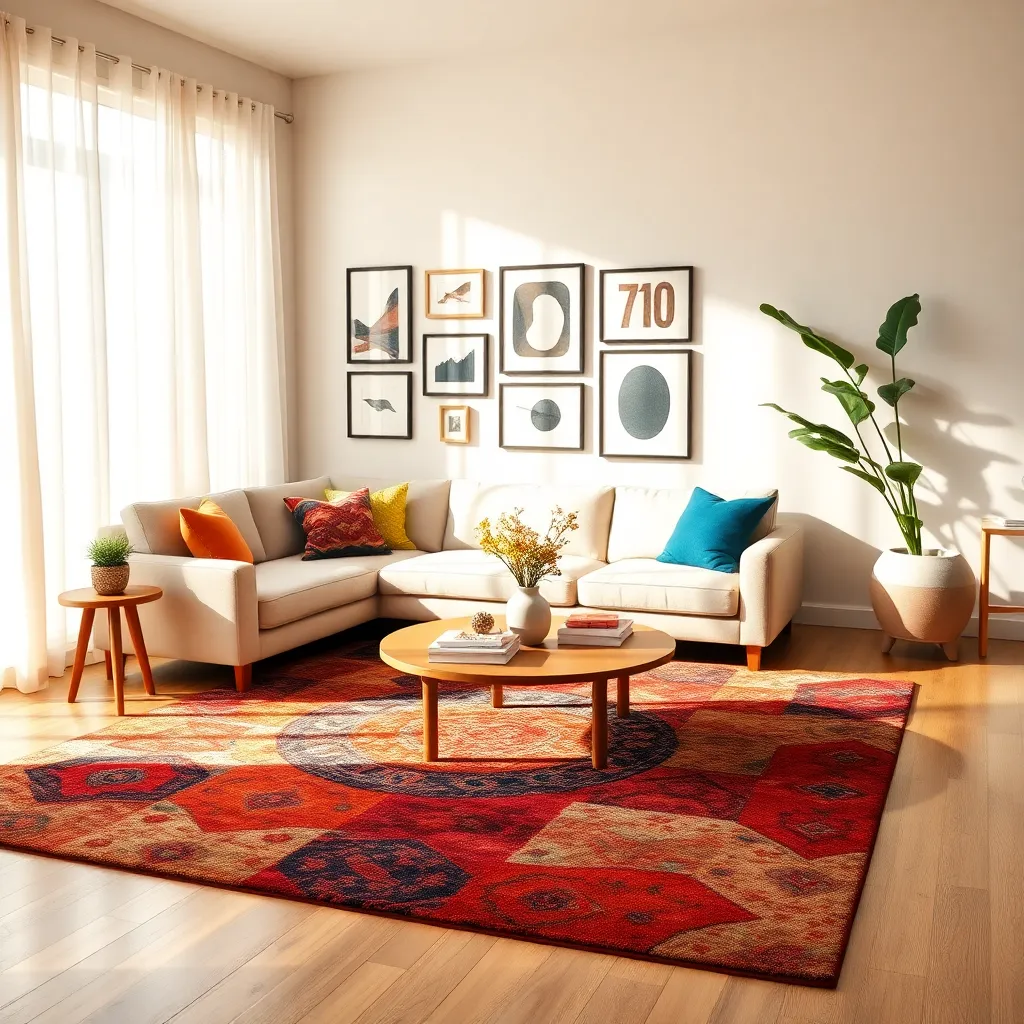
Changing your area rug is an effective way to transform the look and feel of your living room. By choosing a rug with a bold pattern or vibrant color, you can create a focal point that ties together different elements of the room. Consider the size of your space when selecting a rug; a larger rug can make a room feel more cohesive, while a smaller one can define individual areas within an open-plan layout.
Material choice is crucial when selecting an area rug, especially if your living room is a high-traffic area. Opt for durable materials like wool or synthetic blends that can withstand daily use and are easy to clean. For a softer, more luxurious feel, you can choose natural fibers such as silk or jute, but be mindful of their maintenance needs.
Experimenting with textures can add depth to your living room design. A shag rug, for instance, can introduce a cozy, inviting vibe, while a flat-weave rug offers a sleek, modern look. Remember to coordinate your rug with existing furniture and decor; neutral tones can ground a colorful space, while a patterned rug can inject energy into a minimalist setting.
Placement of the rug is equally important in defining your living area. Ideally, the front legs of your furniture should rest on the rug to create a sense of unity and balance. In smaller rooms, an off-center rug with a corner peeking out can add visual interest and make the space feel larger. Follow these tips, and you’ll find that swapping out your area rug can breathe new life into your living room with minimal effort.
Install Floor-to-Ceiling Curtains
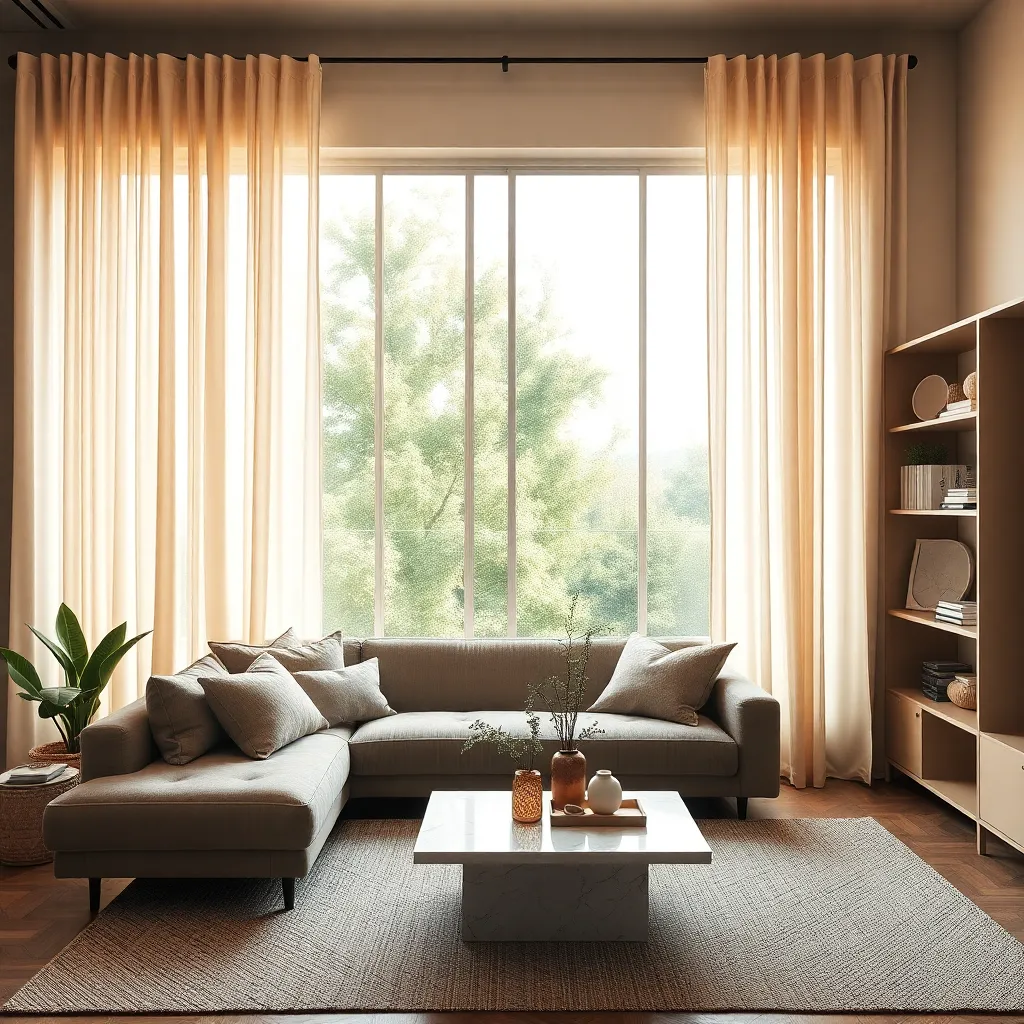
Floor-to-ceiling curtains can dramatically transform your living room by creating an illusion of taller ceilings. To achieve this effect, install the curtain rod as close to the ceiling as possible and let the fabric just graze the floor.
When selecting curtain materials, consider options like linen or velvet for a luxurious touch. Neutral tones such as whites, beiges, or soft grays can blend seamlessly with most decor styles, while bold colors or patterns can serve as a statement piece.
For a cohesive look, match your curtain fabric with other textiles in the room, such as throw pillows or upholstery. Layering curtains with sheer panels can add depth and allow you to control the amount of natural light entering the space.
Advanced decorators might consider adding decorative finials or tiebacks to add an elegant touch. Ensure the curtain rod is sturdy enough to support the weight of the curtains, especially if using heavier fabrics like velvet or blackout panels.
Opt for a New Color Palette
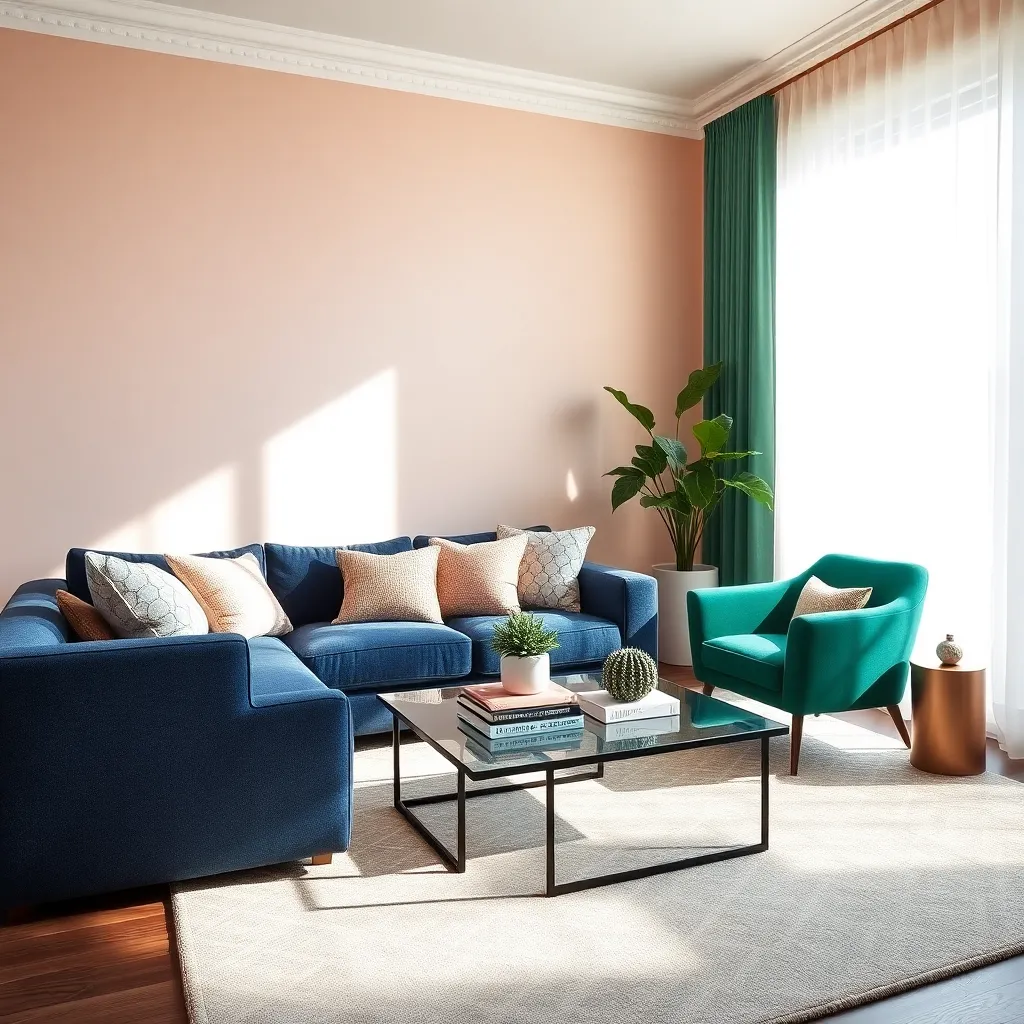
Choosing a new color palette for your living room can instantly transform its mood and functionality. Start by selecting a primary color that resonates with the vibe you want to create—whether it’s a calming blue for relaxation or a vibrant yellow to energize the space.
Incorporating complementary and accent colors will add depth and interest to your design. Consider using a color wheel to find hues that harmonize well, like pairing a soft gray with pops of coral for a balanced yet lively look.
Furniture selection is crucial in supporting your color scheme. Opt for neutral furniture pieces, such as a beige sofa or wooden coffee table, which can serve as a versatile base for your bold color choices in accessories like cushions, throws, or artwork.
For those ready to experiment, try a monochromatic scheme by using varying shades of a single color. Layering different textures and finishes, such as matte and glossy surfaces or linen and velvet fabrics, can add visual interest and sophistication to the room.
Conclusion: Growing Success with These Plants
In this journey through ’12 Creative Living Room Makeover Ideas,’ we’ve explored how thoughtful design can foster deeper connections in our most cherished spaces. From embracing cozy nooks that invite intimate conversations to incorporating personalized art that sparks meaningful memories, each idea serves as a catalyst for nurturing love and understanding. We discussed the importance of versatile seating for adaptability, using lighting to create inviting atmospheres, and the power of decluttering to clear both space and mind. These transformative concepts remind us that our environments profoundly impact our relationships.
As an immediate step, choose one idea from this list to implement today—perhaps rearranging furniture to encourage eye contact or adding a touch of nature for a refreshing vibe. Let this small change be the first step toward a more connected home life.
Remember, building a thriving relationship is an ongoing journey. Bookmark this article to revisit these ideas whenever you need a spark of inspiration. By making your living space a true reflection of your relationship, you’re paving the way for a future filled with warmth, love, and lasting success. Let’s create spaces that not only look beautiful but also feel like home.
